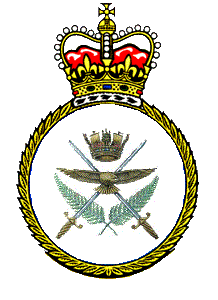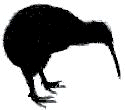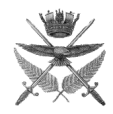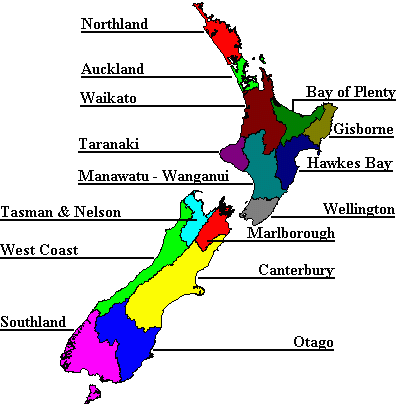The Royal New Zealand Defence Force
By Bryn Monnery, D Hebditch and Adam Smith Acknowledgements Thanks to Andrew Moffatt-Vallance and Kevin Clark for their help, and Mike Jasinski for his 23mm PDS. Several weapons in the equipment section are taken from Abraham Gubler's Australian Defence Force articles. The illustration of the Weta AFV is by Adam Caffrey using POV-Ray. Introduction The Royal New Zealand Defence Force was formed by the final amalgamation on the operational level of the Navy and Army, the Air Force having already been reduced to the Air Corps within the Army, in 2157. Its Royal Charter stems from the Royal New Zealand Navy. Before this a NZDF existed but integration was not total. Narrative The Brigade was strung out in defensive positions north of the Graf Von Spee International Airport on Halbinsel. We were plugging a gap between the Germans on one side and the newly arrived Azanians on the other. The Colonel had placed us covering the main approach route to the airport where reinforcements were coming in by the hour. 5 RAR were out on point in front of the scrub, the US Airborne behind us to the left, the Royal Canadians right rear and the Highlanders in reserve. The Crappies had already tried us once and had been shot to pieces at long range by the lasers of A and C Companies. They'd come on in the same old way, a shambling mass heading into the killing area, over-watched by a couple of battered APCs. Major McCafferty had hit them with a combination of simultaneous light artillery and mortar barrage, missiles and rapid direct laser fire. They'd gone down in droves. 5 RAR as a battalion was rightly proud of its marksmanship. The survivors had then tried to infiltrate through the scrub and ditches and run into the mines and booby traps we laid. We'd all felt pretty pleased by this, even if us Kiwis in Victor Company hadn't got in on the action. It looked as if we were in for a quiet day. More fool us. The Crappies hit us with a massive barrage of hot smoke and HE and suddenly we couldn't see a damn thing. For A Coy in the front-line it was even worse, the surviving Crappies had charged over in a single wave and got stuck in amongst the leading positions. The lasers couldn't generate enough firepower through the smoke to stop them and it then was too close for proximity fused grenades. It quickly degenerated into hand to hand combat with the heavily battlesuited Diggers wielding their utility/entrenching tools at close quarters. Too many of them were swamped, dragged to the muddy ground and finished off. I'd already stood to my Kiwis and was giving snap orders as the word came for us to go in and counter attack. A Company was beginning to fall back. The situation was a real mess; we couldn't lay down effective suppressive fire because of the retreating Diggers and the smoke. I was in a no win situation and if I hesitated we would be over-run like A Coy. 'Oh shit.' I looked at the CSM and he shrugged. 'Dave, get the flanking machine guns firing on fixed lines either side of the LD. FOO I want HE coming down in a line +200 from A Coys position. 4 and 5 Platoons, fix bayonets and prepare to advance.' The order was echoed down the line and was followed with the steely snap of the long, anachronistic blades being attached to the rifles. The CSM fell in beside me as I stood up and led the advance myself. 'This is utter madness you know? Gallipoli here we come.' I didn't answer him, not knowing if he meant the Aussie hospital ship or the ancient battle. We broke into a trot as we moved into the swirling smoke. Parties of diggers rallied fast and followed us back in with quick revenge in mind. All the troops were eerily silent until they met the Crappies looming out of the smoke; then gunfire, the rasp of steel and screaming, both human and alien. The CSM was right, it was madness and straight out of the World War One play book. It worked though, I can only guess that the Crappies were more surprised than we were. Interview with Major Sarah Loesby, The New Zealand Herald, 1/2/2303
The Royal New Zealand Defence Force – An Overview New Zealand is an industrialised nation of 4.9 million people with a large agricultural population. Their economy is based largely on trade in agricultural products and manufactured goods. New Zealand imports large quantities of minerals, mainly from Britain and Australia’s off world colonies. This trade is the basis of New Zealand's prosperity, but NZ does not have any starships of her own, chartering hulls from other nations to move her materials. New Zealand is not a starfaring nation, but roughly 20 million colonists in British and Australian settlements claim New Zealand descent.
Of the Active Service Force, 7,000 are members of the Ground Wing, 3,000 are members of the Maritime Wing, and 2,500 are members of the Air Wing. In the TF, the majority are Ground Wing (Army) members. The Ground Wing fields a Regular Brigade, 2 Reserve Brigades and the various establishments required to make the army run. The TF also has the majority of New Zealand’s wartime logistics and support network. The Maritime Wing has a combat group of 18 Submarine Fighters, 2 modern Submarine Frigates and a single, obsolete, Submarine Cruiser. The patrol group consists of all the surface forces, and has 9 patrol hydrofoils. The shore defence group has a system of mobile Anti-Shipping missile batteries based on New Zealand. Finally a support group has another dozen transport and survey vessels. The Air Wing has 10 Squadrons, each of between 4 and 24 aircraft. It also has a series of anti-air defences around Air Wing bases. New Zealand has 3 military districts, each of which acts as a Brigade HQ. Northern District is headquartered at Auckland and controls the northern half of North Island, it has 2 Brigade HQ under it command. Central District is headquartered at Wellington and controls the southern half of North Island. It has the regular 1 Brigade under it’s command, and includes Army level assets like the New Zealand SAS. Southern District is headquartered at Christchurch, and controls the whole of South Island. It has 3 brigade under its command. The Twilight War New Zealand sent several battalions off to fight in World War III, the most famous being 1/1 RNZIR in 1996. As part of 26 (Commonwealth) Infantry Brigade of the mainly Gurkha 6th (British) Division along with Indian, Fijian and Australian units the battalion fought in central and northern China against the Russians. The brigade performed well in battle, but the situation quickly worsened as the Indo-Pakistani nuclear exchange of 1997 destroyed the 4th Sikh's support. Australia declared war on Indonesia in 1998 over the Papua issue, withdrawing 8 RAR, and taking 4 Sikh's with it (which became the basis of Australia's Sikh Regiment). Only the New Zealanders and the Fijians were left. By 2000, 26 brigade was stationed in Hong Kong with the rest of the division and had a nominal strength of just 250 men (many of whom were Korean or Chinese volunteers) and was finally repatriated home by the Japanese. New Zealand supported Australia in their fight against the Indonesians, sending on average two battalions at a time into the conflict. These were much closer to the home islands than 1/1 RNZIR and were able to rotate and be reinforced with relative ease. However the New Zealand commitment waned by 1999 in the face of economic collapse at home and the final troops were withdrawn from the operational area by 2000. Post-Twilight New Zealand’s natural ally post-war was Japan, as with Japanese trade New Zealand prospered while other nations starved. However New Zealand tried repeatedly to help its Australian neighbour which had collapsed into anarchy. NZ military and relief missions were a common sight in the coastal regions but were most active when working with co-operative ADF garrisons. New Zealand aid was especially strong to Tasmania, helping to forge a strong relationship which lasts to this day. Similarly the southern pacific islands turned to NZ for aid and the country developed into the de-facto centre of its own economic zone. By the 22nd century Britain also became closely involved with New Zealand again as they exploited parts of New Zealand's Antarctic territory for tantalum. The resulting investment caused a boom in New Zealand's economy and tipped her over into being a strong industrial and information economy. Central Asian War The last war New Zealand was actively involved in was the Central Asian War. As a long standing ally of Japan, New Zealand sent an expeditionary unit recruited from volunteers from across the RNZDF called the 'Tarakiwa Rangers' and a squadron of the NZSAS to the theatre. They served as part of the Japanese 6th Airborne Brigade which, along with the famous 1st Airborne Brigade, served as fire brigades in the counter-attack that drove the Manchurian Army back from Russia. They performed well, especially in desant attacks and the Japanese commander was very pleased with his 'Kiwi Kuutai No' or 'Kiwi Airborne'. The battalion was wound down in 2288 and placed in suspended animation, not being reactivated for 11 years. New Zealand consists of 2 main islands (North and South Island) and hundreds of minor outlying islands. The islands are divided into 15 Provincial areas, which perform similar functions to UK counties. Below: Provincial Map of New Zealand
The majority of New Zealand is mountainous terrain, with some large open plains. On North Island the entire East Coast up to Auckland consists of a major mountain range, whereas the mountains to the far north of the island have been actively volcanic in the recent past. South Islands coastline is dotted with fjords, with a major mountain range (The Southern Alps) running the entire length of the island. New Zealand also has territory in Antarctica. America One faction of the American administration (AECA) is currently trying to get support from New Zealand to set up a colony on a world along the American Arm. This has more to do with internal American politics than pro-New Zealand sentiment. AECA wants an additional slice of the US 'Starship Cake', which aiding New Zealand, or any other nation, would give them. New Zealand is currently sceptical as the world in question, Avalon, is very far out and would make New Zealand's effort wholly reliant on US starships. Also Avalon is a world not easily colonised by humans, which is why the US have rejected colonising it themselves. New Zealand is inclined to turn down the Lowe Act, even if it passes. Military co-operation with America is more frequently conducted through the auspices of Australia than bilaterally. The exception are occasional exercises undertaken in the Pacific Islands by 3/1 RNZIR alongside units of the USMC. Australia Australia and New Zealand, share common roots, culture and being geographically close have always been strong allies. The Twilight Era effected this relationship in a fairly profound way. New Zealand was much less badly damaged than Australia and was able to retain a strong central government, mitigating the effects of the economic disaster that followed the war. As a result New Zealand for a while became the senior partner in the ANZAC relationship thanks to its links with Japan and place at the centre of the southern Pacific islands. Australia on the other hand became radicalised during its recovery and came to view New Zealand as a fairly conservative and backwards looking state. Essentially during their relative isolation from each other the two nations began to diverge culturally. Today Australia has once again overtaken its neighbour over the Tasman, having numerous off-world colonies and a booming economy. Australia is brash, somewhat latinised and a keen player in global and interplanetary affairs. Whereas New Zealand is more staid and concentrates on domestic development rather than outwards expansion. However the old ANZAC links remain strong, especially with mainland Australia with defence, cultural and sporting links. RNZDF units are frequently found operating alongside their Australian counter-parts. Indeed Kiwis have fought and died with Australian forces during the Kafer War. It is an unspoken fact that New Zealand remains under Australia's defence umbrella and would rely on its powerful neighbour in any serious conflict. Indonesia One of the unfriendly major regional powers is Indonesia. Indonesia has fought several expansionist wars over the last century, and may finally be in a position to face down Australia or Japan. This has turned the fairly stable two-sided confrontation into a highly unstable 3-sided one. Indonesia is a starfaring nation, although not a colonial power, and is currently seeking logistical support from America for a colony on Avalon. Japan Since the Twilight War, New Zealand has continued to look to Japan as their principal trade partner, and latterly as a major ally. New Zealand is host to a Japanese Naval Base at Auckland, which is occasionally a source of conflict with more nationalist politicians in Australia. However the base is also becoming a controversial topic within New Zealand due to the behaviour of a minority of Japanese service personnel stationed at the base. Bilateral training is conducted with the Japanese but not nearly as frequently or closely as it is with Australia. Manchuria New Zealand’s only recent war has been with Manchuria as part of the Japanese alliance. However, the war seems to have done little major long-term damage to their relationship, and trade with Manchuria still flows through the free city-state of Hong Kong. Papua New Zealand’s nemesis is Papua, an overtly racist state to the north of Australia. New Zealand is now regarded as the paragon of native-settler integration in the Pacific, and Papua’s white Australian dominated state is regarded with suspicion. The RNZDFs main expeditionary plan is based around an opposed military intervention in Papua in conjunction with Indonesia or Australia. Tasmania The former-Australian state of Tasmania is very closely linked to New Zealand, both economically and by a mutual defence treaty. The Tasmanian Defence Force regularly trains with New Zealand, and recently their 2nd Battalion (V), Tasmania Regiment recently performed a Force Exchange with 4 RNZIR. The Tasmanian Ranger Squadron has been trained by the New Zealand SAS Regiment. United Kingdom New Zealand’s continuing attachment to the UK is based partially on nostalgia, cultural links and partially on the fact that the UK offers NZ access to the colonies. This cold, hard fact has kept New Zealand in a loose orbit from for almost 2 centuries. Britain has built a sub-orbital strip at Devonport, originally to bring tantalum to the UK, but now acts as New Zealand's main spaceport. Military co-operation is commonplace, but more on a level of personnel exchanges and exercises than Force Exchanges. The Royal Navy's Far Eastern Squadron is a frequent visitor to New Zealand. The RNZDF has no integrated rank structure, but has standardised the insignia for all three wings. Thus if you encounter a Maritime Wing 'Captain' you address them as 'Lieutenant Commander'. The list below includes only Ground Wing ranks. Enlisted
Lance Corporals wear one Chevron, Corporals two and Sergeants three. Colour Sergeants wear three chevrons with a crown surmounting the chevrons. CSM’s wear a large crown, RSM’s the New Zealand Coat of Arms and BSM’s a CSM’s crown with a pip. The SMA wears the NZ Coat of Arms over a crossed sword and baton of a General Officer. All ranks above CSM hold CSM as their permanent rank, and revert to CSM upon leaving their current position. Commissioned
Officer Cadets wear a white stripe. 2nd Lieutenants, Lieutenants and Captains 1, 2 and 3 pips respectively. Majors wear a small crown and Lieutenant Colonels wearing a crown and pip. Higher ranks are all staff officers, so wear red tabs. Colonels wear a crown and 2 pips, Brigadiers a crown and 3 pips. A General Officer Commanding wears a crossed sword and baton. There is only a single General, Joseph Mateparae, ONZM, Commander of the Royal New Zealand Defence Forces. All other staff officers hold the rank of Colonel, even former Generals, in the New Zealand army, General is a position, not a rank. Regiment: Regiment has two different meanings depending on whether an Infantry Regiment or other type is being referred too. Infantry Regiment refers to the actual Corps of Infantry of the Army, while in the Artillery, Signals, Engineers and Cavalry it means a battalion sized unit. Squadron and Battery: In units that use the word 'Regiment' for their battalions, a squadron is a company-sized formation. The exception is the Artillery, who uses the word 'Battery'. The Air and Maritime Wings also use the term 'Squadron', in both cases for a formation of many, identical, ships or planes. Troop: In Regimental units, a troop is the equivalent of an infantry Platoon. Platoon: The basic building block of a unit, with roughly 30 men and one officer. Section: Called 'Squads' in American trained countries, a section of infantry is 6 Private soldiers, one lance corporal and one corporal. In other units sections are of roughly this size, although sometimes called 'crews' or 'detachments'. New Zealand is a good example of a small nation without access to star travel. The basis of the work was the 1990 Orbat, the one in effect when the bomb went off. Aside from a general expansion (in line with population growth), little has changed in terms of their traditions. The other main aim was to be realistic about what could be afforded. It’s very well for Britain or Germany to have vast arsenals, as they have very large economies, and are some of the world's Great Powers, but NZ is a country of just over 5 million people, with a very strong economy. The defence budget above is more than 5 times the modern budget, but technology means things are more expensive (the regular force is x2.5 the modern size at 5 times the cost). |





